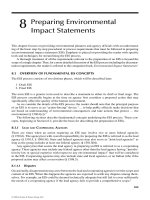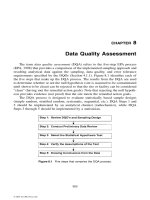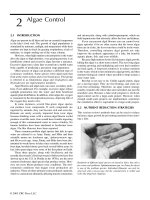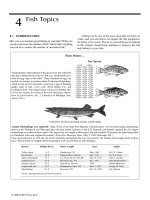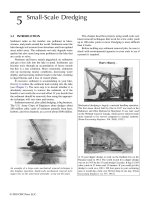Business and society ethics sustainability and stakeholder management 9e chapter 8
Bạn đang xem bản rút gọn của tài liệu. Xem và tải ngay bản đầy đủ của tài liệu tại đây (1.6 MB, 40 trang )
© 2015 Cengage Learning
1
Chapter 8
Personal and
Organizational
Ethics
© 2015 Cengage Learning
2
Learning Outcomes
1. Understand the different levels at which business ethics may be
2.
3.
4.
5.
6.
addressed.
Differentiate between consequence-based and
duty-based principles of ethics.
Enumerate and discuss principles of personal ethical decision
making and ethical tests for screening ethical decisions.
Identify the factors affecting an organization’s ethical culture and
provide examples.
Describe and explain actions, strategies, or “best practices” to
improve an organization’s ethical climate.
Identify and describe concepts from “behavior ethics” that affect
ethical decision making and behavior in organizations.
© 2015 Cengage Learning
3
Chapter Outline
• Ethics Issues Arise at Different Levels
• Personal and Managerial Ethics
• Managing Organizational Ethics
• Best Practices for Improving an Organization’s Ethical
Culture
• Behavior Ethics – Striving Towards a Deeper
Understanding
• Moral Decisions, Moral Managers, and Moral
Organizations
• Summary
© 2015 Cengage Learning
4
Personal and Organizational
Ethics
• Managers encounter day-to-day ethical
challenges in such areas as:
•
conflicts of interest
•
sexual harassment
•
customer dealings
•
pressure to compromise on personal standards,
and more
• Many managers have no training in ethics or
ethical decision making.
• Ethics is vital to business success.
© 2015 Cengage Learning
5
Ethics Issues
Arise at Different Levels
Personal level -
•Situations faced in our personal lives outside the
context of our employment.
Organizational level -
•Workplace situations faced by managers and
employees.
Industry or profession level -
•A manager or organization might experience business
ethics issues at the industry or professional level.
Societal and global levels -
•Managers acting in concert through their companies
and industries can bring about constructive changes.
© 2015 Cengage Learning
6
Personal and Managerial Ethics
Three major approaches to ethical
decision making 1.Conventional Approach •
Discussed in chapter 7
1.Principles Approach 1.
2.
Managers desire to make decisions based on a
more solid foundation than is provided by the
conventional approach to ethics.
A principle of business ethics is an ethical concept,
guideline, or rule that assists you in taking the
ethical course.
•Ethical Tests Approach 1.
Discussed later in this chapter.
© 2015 Cengage Learning
7
Types of Ethical Principles
Teleological theories •Focuses on consequences or results of an
action.
Deontological theories •Focuses on duties, without regard to
consequences.
Aretaic theories •Focuses on the virtue of an action.
© 2015 Cengage Learning
8
Principles Approach to Ethics
Major principles of ethics •Utilitarianism
•Kant’s Categorical Imperative
•Principle of Rights
•Principle of Justice
•Ethical Due Process
•Rawl’s Principle of Justice
•Ethics of care
•Virtue ethics
•Servant leadership
•The Golden Rule
© 2015 Cengage Learning
9
Ethical Tests Approach
© 2015 Cengage Learning
10
Managing Organizational Ethics
• Ethical decision-making is at the heart of business
ethics.
• One must sharpen one’s decision-making skills to
avoid amoral thinking, and achieve moral
management.
• A manager must see the organization's ethical
climate as part of its corporate culture.
• An ethical climate is shaped through actions taken,
policies established, and examples set.
© 2015 Cengage Learning
11
Factors Affecting the Morality of
Managers and Employees
Society’s Moral Climate
Business’s Moral Climate
Industry’s Moral Climate
Organization’s Moral Climate
Superiors
Superiors
Individual
Individual
One’s
One’sPersonal
Personal
Situation
Situation
Policies
Policies
Peers
Peers
© 2015 Cengage Learning
12
Factors Affecting the
Organization’s Moral Climate
1. Behavior of superiors – the number one
influence on moral climate
2. Behavior of one’s peers – the second
influence; people do pay attention to what
their peers in the firm are doing
3. Industry or professional ethical practices –
ranked in the upper half; these context
factors are influential
4. Personal financial need – ranked last
© 2015 Cengage Learning
13
Improving the Organization’s
Ethical Culture
•
The emphasis is on creating an ethical
organizational culture or climate, one in which
ethical behavior, values and policies are
displayed, promoted and rewarded.
• Compliance vs. Ethics Orientation1. Ethics thinking is principles based; compliance
thinking is rule-bound and legalistic. A compliance
orientation can undermine ethical thinking.
2. Compliance can squeeze out ethics.
3. Managers many not consider tougher issues that a
more ethics-focused approach might require.
© 2015 Cengage Learning
14
Best Practices for Improving an
Organization’s Ethical Culture
• Three key elements that must exist if an ethical
organizational culture is to be developed and
sustained:
1. The continuous presence of ethical leadership
reflected by the board of directors, senior executives
and managers.
2. The existence of a set of core ethical values
infused throughout the organization by way of policies,
processes and practices; and
3. A formal ethics program which includes a code of
ethics, ethics training and an ethics officer.
© 2015 Cengage Learning
15
Improving Ethical Culture
© 2015 Cengage Learning
16
Top Management Leadership
(Moral Management)
(1 of 2)
• This premise cannot be overstated:
• The moral tone of an organization is set by
top management.
• In a poll of communication professionals,
more than half believed that top management
is an organization’s conscience.
• Managers and employees look to their bosses
at the highest levels for their cues as to what
practices and policies are acceptable.
© 2015 Cengage Learning
17
Top Management Leadership
(Moral Management)
(2 of 2)
• Weak Ethical Leadership – led an employee to embezzle
$20,000 over a 15 year period, explaining that she thought it
was ok because her boss used firm employees for personal
needs, took money from the firm’s petty cash box, raided the
soft drink machine, and used company stamps. Her boss said
it was all true, and that she should not be dealt with too
harshly.
• Strong Ethical Leadership – When a batch of tubes in
production failed a critical safety test, leaving in question the
10,000 already manufactured, the VP, without hesitation, said
“scrap them.” That act set the tone for the corporation for
years, because everyone present knew of situations in which
faulty products had been shipped under pressure of time and
budget.
© 2015 Cengage Learning
18
Two Pillars of Leadership
Traits
Traits
Role
Role
Modeling
Modeling
Behaviors
Behaviors
Ethics
Ethics
Communication
Communication
Decision
Decision
Making
Making
Effective
EffectiveRewards
Rewards
and
andDiscipline
Discipline
© 2015 Cengage Learning
Moral Manager
Moral Person
Ethical
EthicalLeadership
Leadership
19
Effective Communication
of Ethical Messages
Requires -
•Written and verbal communication
•Non-verbal communication
•Candor – forthright, sincere and honest
•Fidelity – be faithful to detail, accurate,
avoid deception or exaggeration
•Confidentiality – exercise care in deciding
what information to disclose to others. Trust
can be shattered if confidences are breached.
© 2015 Cengage Learning
20
Ethics Programs and Ethics Officers
Ethics programs typically include:
•Written standards of conduct
•Ethics training
•Mechanisms to seek ethics advice or information
•Methods for reporting misconduct anonymously
•Disciplinary measures for employees who violate
ethical standards
•Inclusion of ethical conduct in the evaluation of
employee performance
© 2015 Cengage Learning
21
Setting Realistic Objectives • Managers must be keenly sensitive to the possibility of
unintentionally creating situations in which others may
perceive a need or incentive to cut corners or do the wrong
thing.
• Unrealistic expectations are the primary driver of employees
perceiving excessive pressure to achieve goals.
• Example: A marketing manager set a sales goal of a 20%
increase for the next year when a 10% increase was all that
could be realistically and honestly expected, even with
outstanding performance. A subordinate might believe he or
she should go to any lengths to achieve the 20% goal.
© 2015 Cengage Learning
22
Ethical Decision-Making Processes
© 2015 Cengage Learning
23
Ethics Check Ethics Check 1.Is it legal?
2.Is it balanced?
3.How will it make me feel about myself?
© 2015 Cengage Learning
24
Ethics Quick Test 1. Is the action legal?
2. Does it comply with our values?
3. If you do it, will you feel bad?
4. How will it look in the newspaper?
5. If you know it’s wrong, don’t do it.
6. If you’re not sure, ask.
7. Keep asking until you get an answer.
© 2015 Cengage Learning
25
